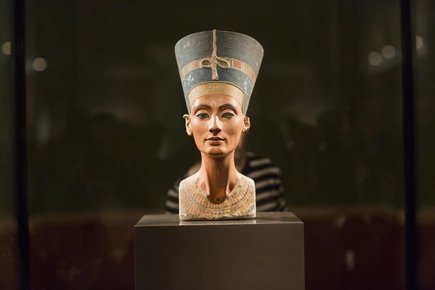
Soviet Memorial Treptow
In memory of the victims of the Second World War
80,000 Soviet soldiers died in the Second World War fighting to capture Berlin. The Soviet War Memorial in Treptow commemorates them.
Only a few steps from the busy Treptower Hafen is the Soviet War Memorial in Treptower Park. You enter the cemetery of honour through a large triumphal arch framed by tall trees and lush green grass, and then there is a respectful silence all around you.
A cemetery for 7000 Soviet soldiers
After the Second World War, three large Soviet war memorials were erected in Berlin: one in Schönholzer Heide in Pankow, one in the Tiergarten and this one in Treptower Park. One a nine-hectare site, the Treptow memorial is the biggest in Germany. The memorials are not just places of remembrance, but also military cemeteries. 7000 soldiers of the Red Army are buried in Treptow alone.
The memorial in Treptower Park was built between 1946 and 1949 based on the submissions of a “creative collective” led by the architect Yakov S. Belopolski, the sculptor Yevgeni V. Vuchetich, the painter Alexander A. Gorpenko and the engineer Sarra S. Valerius. The Soviet War Memorial in Treptow was dedicated on 8 May 1949, exactly four years after the second war ended.
The design of the Soviet War Memorial in Treptow
You can enter the Soviet memorial either from the north on Puschkinallee or the south on Straße am Treptower Park. At both entrances, a round arched portal guides you into the symmetrically laid-out memorial. The paths meet at the forecourt where you will see the three-metre-high sculpture, Mother Russia: a woman grieving for her fallen sons.
An avenue of weeping willows takes you past two flags carved from red granite. Behind them, five lawns and eight sarcophagi are arranged. The lawns symbolise the communal graves. The actual cemetery of the soldiers of the Red Army is behind the sarcophagi, under the plane trees.
The centrepiece is the mausoleum on a hill, topped by the statue of a Soviet soldier, carrying a child in one arm and resting his sword on a shattered swastika.
To this day, visitors and politicians lay wreaths every year in honour of the fallen soldiers and the liberation of Berlin.



